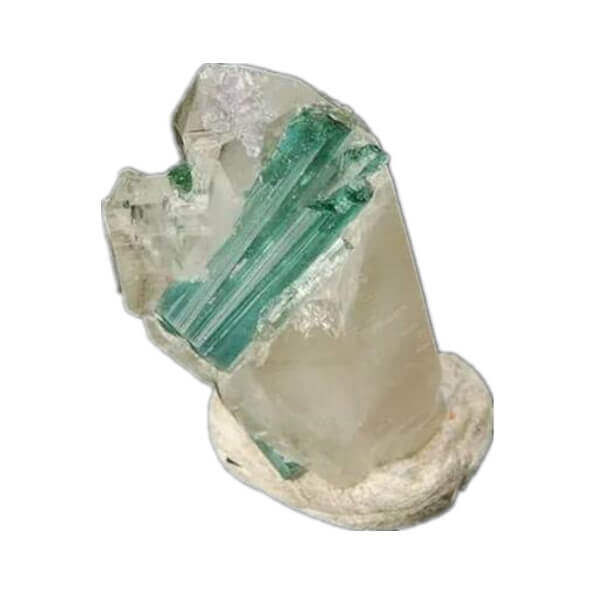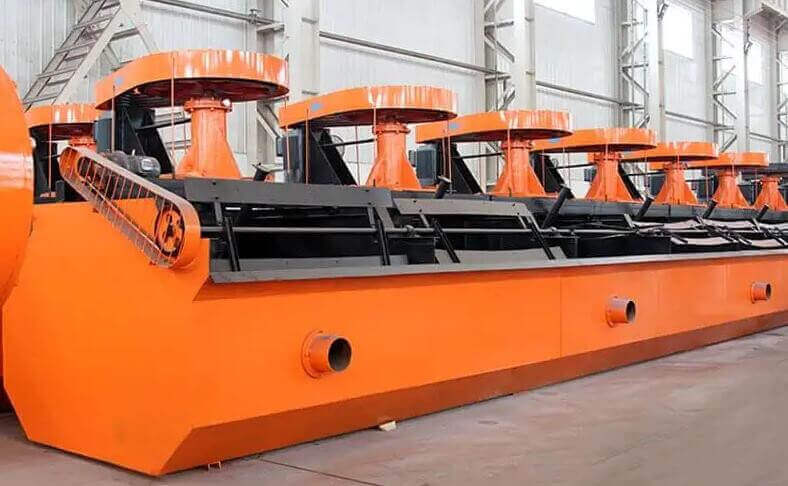The density of beryl is 2.65~2.9g/cm3, similar to gangue minerals, and cannot be separated by gravity. Beryl needs to be smelt through beneficiation and enrichment. The commonly used beneficiation method is flotation. Other processes, such as hand selection, selective grinding, magnetic separation, and radiation sorting, are auxiliary. So how to beneficiate beryl? Following we will introduce the beneficiation method.
Hand Selection
Hand selection is a method of sorting beryl concentrate by manual selection based on the difference in appearance characteristics (color, luster, crystal shape) between beryl and associated gangue minerals. Hand selection is often performed on a slow-moving belt. The particle size of the separated ore is usually larger than 10-25 mm, and the determination of the lower limit of the particle size mainly depends on the economic effect. In order to improve the efficiency of manual selection, the ore often needs to be pre-screened before manual selection, the ore needs to be washed if necessary, and the working area should have good lighting.
Hand selection has always played an essential role in the production of beryl concentrate and is the primary method for producing beryl concentrate. However, manual separation is labor-intensive, low in production efficiency, poor in sorting indicators, and wastes a lot of resources. Other mechanical separation methods are gradually replacing it. The beryl crystals in pegmatite are thick and easy to select, and hand selection is still one of the critical methods for producing beryl concentrate.
Flotation
Flotation is an essential method for selecting low-grade, finely embedded-beryl ores. Mineral processing workers at home and abroad have conducted extensive and in-depth research on this and proposed the Lamb method (Lamb), Rabid City method (Rabid City ), Runke, Calgon, Eigeles, and many other ways of flotation beryl.
Practice notes: no matter whether using cationic collectors or anionic collectors, beryl can float, but if there is no selective adjustment agent, the effective separation of beryl and associated gangue cannot be achieved. Therefore, beryl must be pre-treated by adding a regulator before flotation. According to the pH of the medium during pretreatment, people divide the flotation process of beryl into two categories: one is the acid process, and the other is the alkali process.
Acid flotation process
The acid method process is to treat the pulp with hydrofluoric acid (or sodium fluoride and sulfuric acid) in advance to activate the beryl and then add collectors and foaming agents to float the beryl. According to the beryl select order, it can subdivide the acid process into two types: acid mixed flotation and acid priority flotation.
Acid method mixed flotation process
- Firstly use amine acetate and a foaming agent to float mica in an acidic medium.
- Add hydrofluoric acid to activate feldspar and beryl.
- Use a cationic collector to mix flotation feldspar-beryl. Wash the mixed concentrate(adding calcium hypochlorite), and after removing the drug, float the beryl with petroleum sulfonate.
The acid priority flotation process is to use sulfuric acid to adjust the slurry, add a cationic collector to float the mica, wash the ore, concentrate, and then treat with hydrofluoric acid, and use a fatty acid collector to float the beryl in the soda medium.
The grade of beryl concentrate obtained by the above flotation method is not too high, so it often uses magnetic separation, heating flotation, or other techniques to process.
- When the ore contains sulfide, use xanthate to float it first.
- If there is more fluorite, float out with a small amount of water glass and an anion collector after mica flotation.
- If the ore contains more strongly weathered feldspar, usually preferential flotation can obtain better results.
Description of beryl flotation practice: Some heavy minerals (or floating minerals) associated with beryl in the ore, such as garnet, hornblende, tourmaline, apatite, etc., affect the quality of the final beryl concentrate quite large, should rule out as soon as possible.
Alkaline flotation process
The alkaline flotation process is that treat the ore with alkali before grinding or flotation, washing & desliming the ore, then adding the fatty acid collector and foaming agent to float the beryl.
Other Beneficiation Methods
Radioactive mineral processing
Radiation beneficiation is also a method of sorting beryl. This method is based on beryl being irradiated by v-rays and presenting induced radioactivity. The counter records it and manipulates the actuator to collect beryl nuggets into the concentrate tank.
Particle Flotation
Particle float, also known as cypress float or floating gravity separation, is based on the difference in physical and chemical properties of the mineral surface, relying on the effect of surface tension to make the surface of hydrophobic minerals gather many tiny air bubbles form aggregates and float on the water surface, while hydrophilic minerals Sink to the bottom of the water and sort according to the principle of gravity. Granular floatation is widely used in China tungsten-tin concentrators, and its leading equipment is a granular floatation shaker or chute.
Magnetic separation
Magnetic separation is an auxiliary method to remove magnetic impurities from beryl concentrate to improve the grade of the concentrate. Because some minerals associated with beryl, such as garnet, tourmaline, hornblende, and biotite, have similar planktonic properties to beryl, some flotation processes often cannot effectively separate them from beryl. However, these Minerals have weak magnetism, and they can be separated from beryl concentrate by magnetic separation to improve the quality of beryl concentrate.
Selective grinding
This method is based on the beryl having a relatively high hardness (7.5~8). When it is together with softer gangue minerals (such as mica schist and talc), they have a hardness difference. Selective grinding grinds the friable gangue minerals finely while the beryl remains relatively coarse-grained, and then sieving achieves the preliminary separation.
We are a professional mineral ore solution supplier and mining equipment manufacturer, if you need to process beryl please ask us for free flow design.
LATEST PRODUCTS
Twin Screw Feeder
【Feeding Capacity】 10-160 t/h【Power】 2.2-…
Tubular Screw Conveyor
【Capacity】6-50 m3/h【Procesible Material】 …
Heavy Plate Feeder
Capacity: 100-240 m3/h Power: 15-45 kW Speed: 0…











